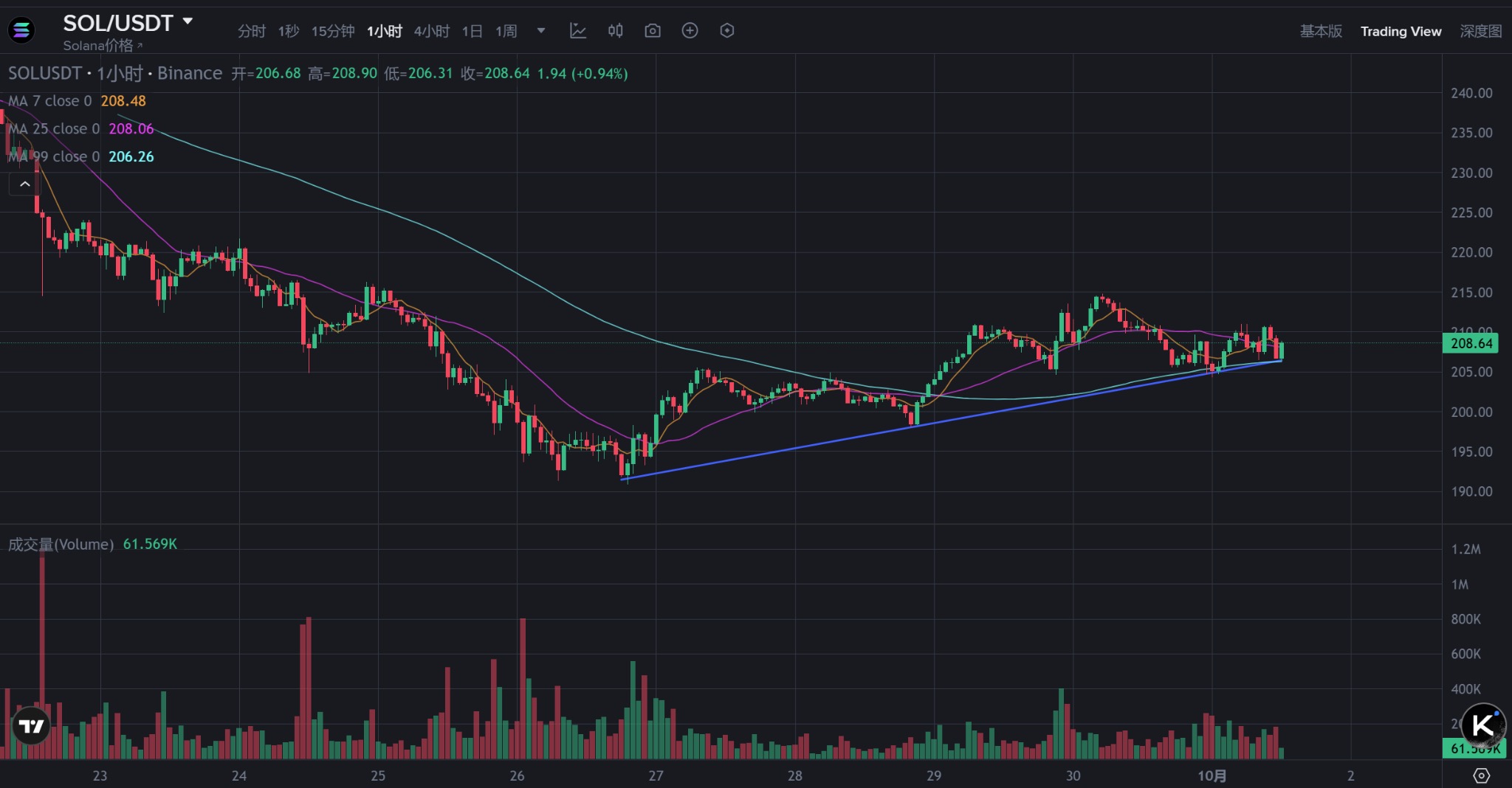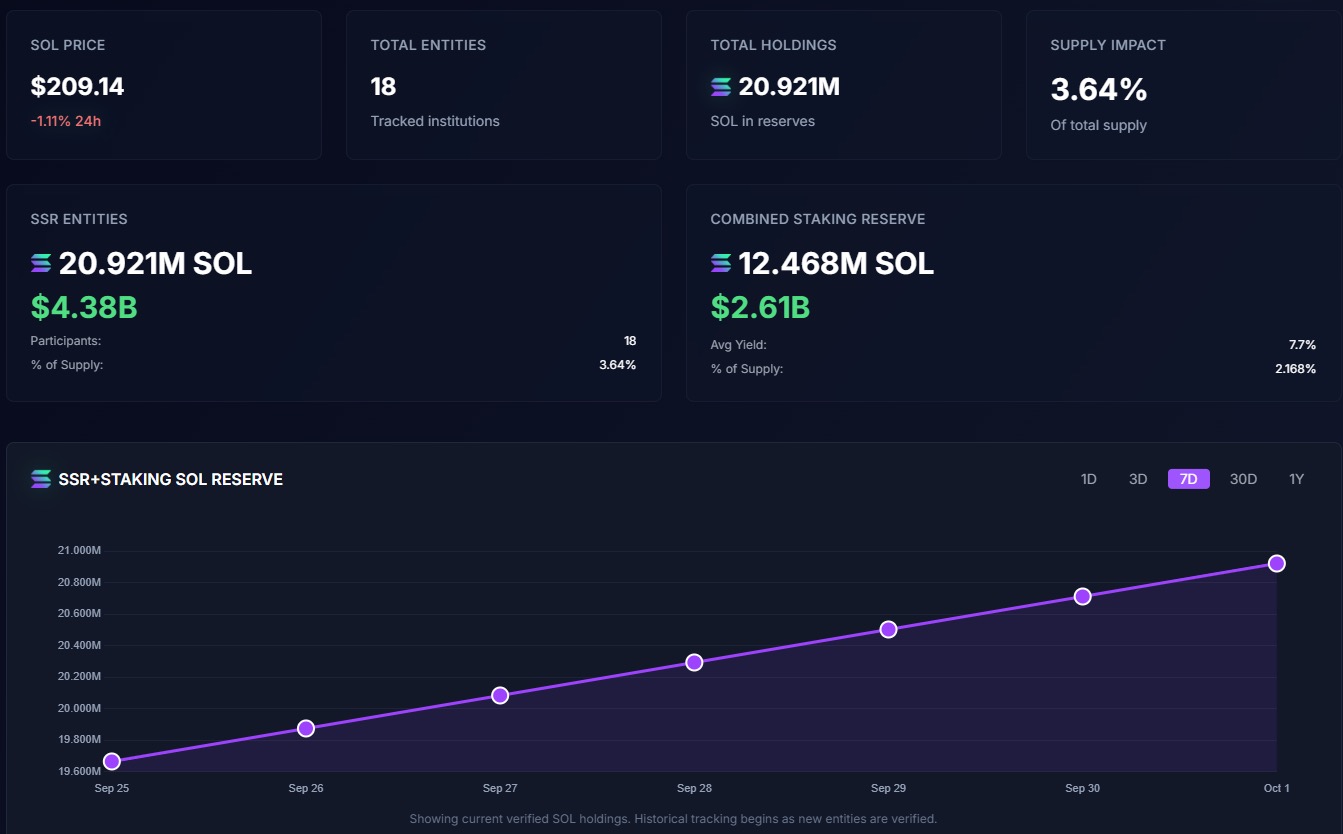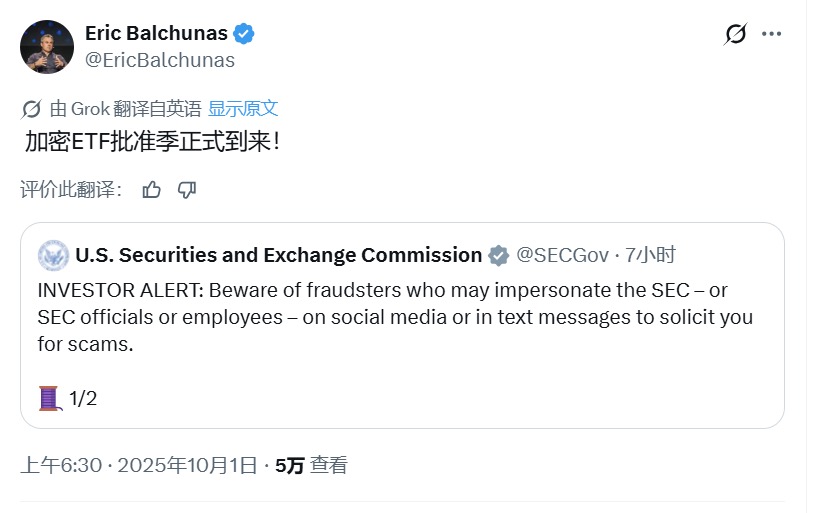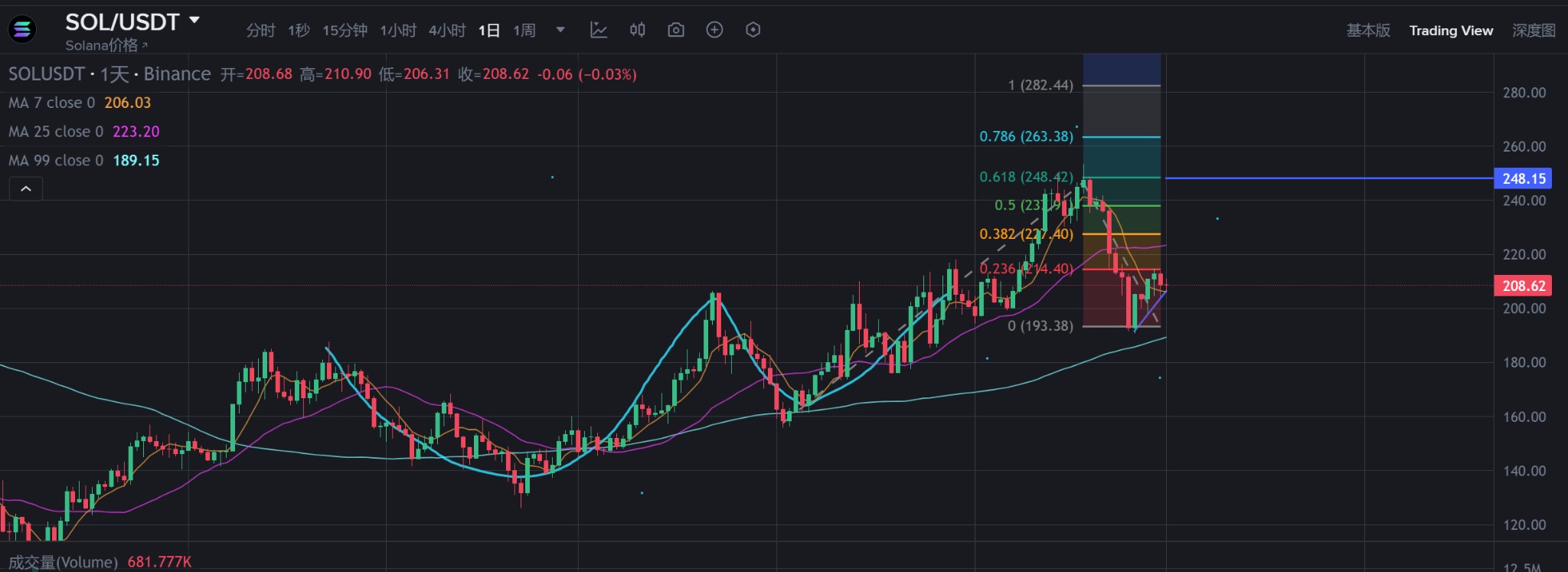Written by: White55, Mars Finance

The black swan of the U.S. government shutdown has flapped its wings again. On October 1, the price of SOL suddenly plummeted to $204, and later, leveraged retail long positions were liquidated amid the intense volatility.
However, this panic sell-off was surprisingly short-lived. At the moment the price hit bottom, on-chain data captured that large entities were quietly accumulating positions.
As of the time of writing, SOL has quickly rebounded above $209, successfully reclaiming the median range of the weekly opening price. Although political uncertainty triggered the initial sell-off, the Dow Jones, S&P 500, and Nasdaq all closed higher that day, with the cryptocurrency market following suit to achieve a reversal. This resilience sends a clear signal to the market: institutional investors have not altered their long-term positions due to short-term political noise.
Institutional Accumulation and On-Chain Signals
On-chain data provides clear evidence of institutions continuously accumulating SOL.
On September 22, the net outflow of SOL reached $126.8 million, marking one of the largest single-day outflows in recent weeks.
Such large-scale outflows typically indicate that whales and large holders are transferring assets from exchanges to private wallets, reducing the liquid supply in the market in preparation for long-term holding.
In the past five days, spot market traders have steadily increased their holdings of SOL worth over $100 million. The largest purchase occurred on March 28, amounting to as much as $89 million. This accumulation pattern aligns with institutions' growing confidence in SOL's long-term prospects. The activity on the Solana network itself also supports this optimistic outlook.
From March 24 to mid-September, the number of transactions on the Solana network increased from 87.6 million to 92.7 million, indicating a rise in user activity. This strengthening of fundamentals provides positive support for price trends, suggesting that network usage growth precedes price increases.

The explosive growth in the supply of stablecoins provides another key signal. In the past 24 hours, the total amount of stablecoins on Solana increased by over $300 million.
Historical data shows that an increase in stablecoin supply often signals a rise in demand for SOL, as traders need to purchase SOL to participate in DeFi and memecoin activities within the Solana ecosystem.

In addition, the Solana treasury established by 18 entities has a total holding of 20.921 million SOL, valued at $4.37 billion, of which approximately 12.468 million SOL is staked, accounting for 59.6% of these entities' total holdings. This behavior of long-term locking of supply provides structural support for the price.
Market Resilience Amid Political Volatility
The risk of a U.S. government shutdown should have been a significant bearish factor for the cryptocurrency market.
According to analysis, the government shutdown could cost the U.S. economy about $7 billion per week, and delays in federal employee salaries could impact consumer spending, exacerbating market anxiety over policy uncertainty and increasing volatility. However, the market has shown remarkable resilience. This seemingly counterintuitive phenomenon can be explained by two key factors: the market has already priced in expectations of a government shutdown, and cryptocurrency traders are more focused on industry-specific catalysts.
Against the backdrop of the U.S. political deadlock, Bitcoin and SOL traders have chosen to focus on the numerous positive catalysts present in the cryptocurrency market. Bitcoin traders are still paying attention to the Federal Reserve's upcoming three interest rate cuts and the potential appointment of a pro-Trump Federal Reserve chair. These macro factors could provide a more favorable environment for high-risk assets.
For SOL, traders expect that Bitcoin's upward momentum will boost all altcoins, with their sights set on the SEC's October 10 deadline, when the commission will decide the fate of numerous spot SOL ETFs. This selective focus reflects the increasing maturity of the cryptocurrency market, as participants learn to distinguish between short-term noise and long-term trends.
Prospects for SOL ETF Approval and Regulatory Changes

On October 1, Bloomberg's senior ETF analyst Eric Balchunas made an important prediction, stating that the probability of ETF approvals for Litecoin, Solana, and XRP has reached 100%.
This judgment is based on the SEC's latest approval of general listing standards, which render the previous 19b-4 application process ineffective and significantly simplify the approval process. Under the new rules, the approval time can be reduced from 240 days to 75 days, and analysts expect that over 100 cryptocurrency ETFs may be launched in the next 12 months.
The shift in the regulatory environment marks a broader recognition of cryptocurrency as an asset class.
Issuers are preparing for the SEC to potentially approve SOL ETFs soon, possibly as early as next week. Sources reveal that behind the scenes, issuers are getting ready for the SEC to greenlight SOL ETFs in a matter of days. Insiders related to three different ETF issuers indicate that next week could be the time for Solana ETF approvals. However, the U.S. government shutdown may temporarily delay this process, as approvals are highly unlikely to occur during the shutdown. But once the government reopens, the approval of SOL ETFs could quickly advance. The significance of ETF approvals extends far beyond short-term price impacts.
Galaxy Digital has acquired $1.16 billion worth of SOL, most of which has been transferred to Coinbase, reinforcing market confidence in Solana's liquidity and institutional support. The recognition of institutional-grade blockchain paves the way for Solana's application in traditional finance.
Technical Patterns and Price Target Predictions

Technical analysis shows that Solana is at a critical turning point. Since May, SOL has been forming a classic "cup and handle" pattern, with the "cup" formed from May to July, reaching a low around $105, while the current price consolidation between $175 and $195 forms the "handle."
This bullish continuation pattern typically breaks upward, with a measured target price of around $282.
The cup and handle breakout pattern confirmed on the monthly chart suggests even greater long-term targets. Based on this pattern, the long-term target price for SOL could reach around $550, indicating a potential increase of over 120% in the coming quarters.
This technical narrative is reinforced by fundamental factors. The proposed Alpenglow upgrade for Solana is expected to be launched later this year, aimed at enhancing network throughput and efficiency. Meanwhile, the Firedancer validator has undergone extensive testing and is expected to become a major catalyst for Solana's network performance.
In terms of key price levels, traders view the $210-$220 area as an important support level, which aligns with the cluster of the 20-day moving average. On the upside, the $246-$252 range constitutes a major resistance level, and breaking through this area could open up upward potential towards $265-$320.
Ecosystem and Fundamental Support
The fundamental growth of the Solana ecosystem provides solid support for its valuation.
By 2025, among the 100 million tokens issued across major mainstream networks, Solana holds an absolute advantage with 85 million. This reflects its increasingly prominent position as a leading platform for memecoins, gaming assets, and project tokens.

Solana's dominance in the DeFi space continues to expand. The total value locked (TVL) in its DeFi protocols has surpassed $12 billion, setting a new historical high. This growth highlights Solana's increasingly important role in decentralized lending, trading, and staking platforms. The network effect of Solana is creating a virtuous cycle. More users attract more developers, leading to the creation of more applications, which further attracts more users. Currently, Solana operates as a single global state machine, meaning that all nodes in the network have the same view of the blockchain state, making Solana highly resistant to fraud and censorship. Solana's speed, scalability, and low transaction costs make it an attractive choice for developers and users. Its historically proven consensus mechanism (PoH) allows Solana to process up to 50,000 transactions per second, with negligible fees. This technological advantage is particularly crucial in applications requiring high throughput.
In the long run, Solana's price trajectory will depend on its ability to achieve mass adoption. The cup and handle pattern indicated by technical analysis points to a $550 target, while the fundamental growth of the ecosystem provides support for this. With the launch of the Firedancer validator and the implementation of the Alpenglow upgrade, Solana is expected to address network interruption issues and further enhance its scalability.
免责声明:本文章仅代表作者个人观点,不代表本平台的立场和观点。本文章仅供信息分享,不构成对任何人的任何投资建议。用户与作者之间的任何争议,与本平台无关。如网页中刊载的文章或图片涉及侵权,请提供相关的权利证明和身份证明发送邮件到support@aicoin.com,本平台相关工作人员将会进行核查。




